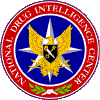ARCHIVED
![]() To Contents
To Previous Page To Next Page
To Publications Page To Home Page
To Contents
To Previous Page To Next Page
To Publications Page To Home Page

|
National Drug Intelligence Center Wisconsin Drug Threat Assessment Update June 2002 Other Dangerous DrugsOther dangerous drugs such as MDMA, GHB, and LSD pose an increasing threat to the state. Caucasian local independent dealers distribute these drugs, primarily to teenagers and young adults at raves and dance clubs. The diversion and abuse of pharmaceuticals also pose a concern for law enforcement and healthcare professionals in the state.
MDMAThe availability and abuse of MDMA (3,4-methylenedioxymethamphetamine) are increasing in Wisconsin. Local independent dealers transport MDMA into the state primarily from Chicago, but also from Minneapolis, Las Vegas, and Rockford, Illinois. According to state and local law enforcement, MDMA typically is distributed to teenagers and young adults for $25 per tablet.
GHBThe availability and abuse of GHB (gamma-hydroxybutyrate) also are increasing in the state. GHB generally is produced outside Wisconsin and transported into the state by local independent dealers. However, production also may be occurring in the state, as evidenced by a GHB laboratory seizure in the Milwaukee area in February 2002. According to state and local law enforcement, GHB typically is distributed to young adults at raves and dance clubs for $25 per dose. GHB, also known as liquid ecstasy, Georgia homeboy, grievous bodily harm, liquid X, and goop, is a central nervous system depressant that was banned by the Food and Drug Administration in 1990. It is odorless, tasteless, and virtually undetectable if added to a drink. An individual can lose consciousness within 20 minutes of ingesting GHB and often has no memory of events following ingestion. It is difficult to trace, usually leaving the body within 12 hours. Because of these properties, GHB has been used to commit drug-facilitated sexual assault.
LSDThe hallucinogen LSD (lysergic acid diethylamide), also known as acid, boomer, and yellow sunshine, is a hallucinogen that induces abnormalities in sensory perceptions. It is available in some areas of the state and is transported from California and distributed at the retail level by independent dealers. In the first quarter of FY2002, a dose typically sold for $2 to $4 per dose in Milwaukee, according to DEA. LSD typically is taken orally and is applied to blotter paper and candy or disguised as breath freshener drops. The effects of LSD are unpredictable depending upon the amount taken, the environment in which it is abused, and the abuser's personality, mood, and expectations. Two long-term disorders associated with LSD are persistent psychosis and hallucinogen persisting perception disorder (flashbacks).
Diverted PharmaceuticalsPharmaceuticals are diverted, distributed, and abused in Wisconsin; however, the threat posed by diverted pharmaceuticals is limited compared with illicit drugs. Commonly abused pharmaceuticals include OxyContin, Valium, Vicodin, and Xanax. Pharmaceuticals generally are acquired by abusers and distributors through forged or stolen prescriptions, doctor shopping--visiting numerous physicians to obtain multiple prescriptions, and theft from pharmacies and nursing homes. OxyContin, a powerful opiate-based pain relief medication, is the most prevalent diverted pharmaceutical in the state. OxyContin, which has heroin-like effects that last up to 12 hours, is designed to be swallowed whole for controlled-release dosing; however, abusers often chew the tablets or crush them into powder, which destroys the controlled-release properties. This results in a more rapid absorption into the body when consumed orally, snorted, or mixed with water and injected.
|
End of page.